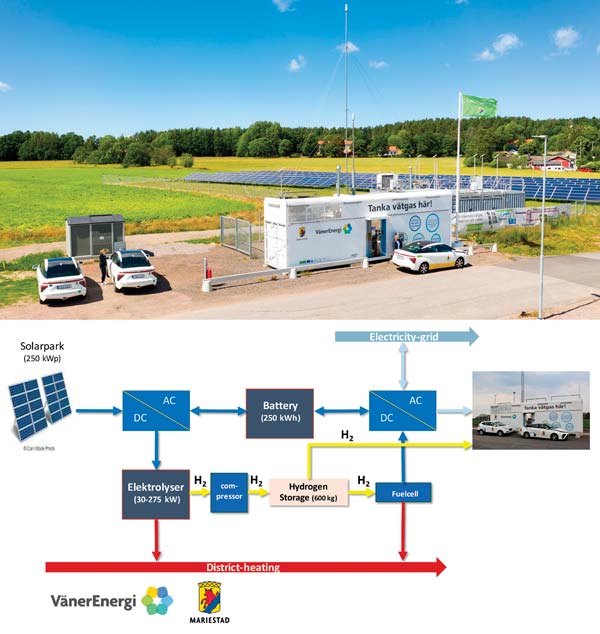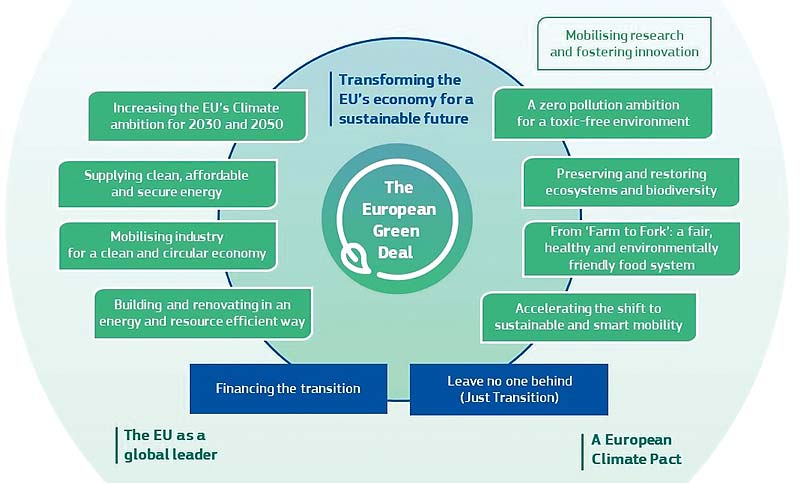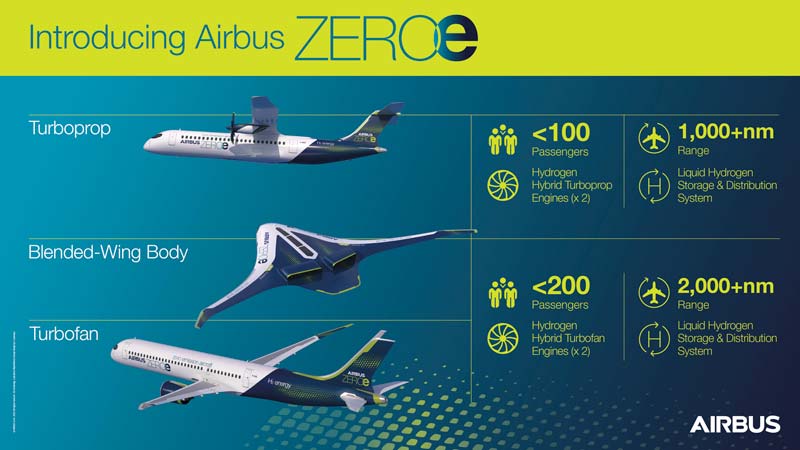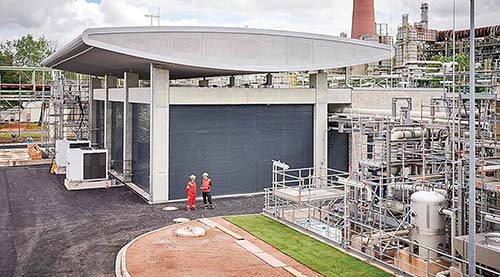Extracting clean energy from water has been a dream for more than a century and many of us remember the book Jules Verne wrote in 1874, ‘The Mysterious Island’ and its vision to extract hydrogen from water, it becoming an infinite source of energy for future generations. So, for 147 years, the use of civil hydrogen has been up for debate and we are unable to hazard a guess at the number of articles, conferences and announcements supporting the inception of hydrogen as an undoubtable source of energy.
For us as power electronics engineers, very much as it was in Jules Verne’s vision, hydrogen energy is achieved by electrolyzing hydrogen and oxygen, and then deploying a fuel cell to generate electricity. In reality the worldwide production of hydrogen by electrolyzation is less than 4%, with more than 94% produced from fossil resources, mainly coal and gas, and with anecdotal production from biomass and other representing just 2%.
70% of the overall hydrogen produced in the world is extracted from the natural gas methane. Its extraction uses a so called ‘steam reforming’ process in which high-temperature steam (700°C – 1,000°C) is used to produce hydrogen. The steam reforming process, if the CO2 is not captured is responsible of high levels of greenhouse gas emissions. The amount of CO2 released by worldwide hydrogen production is estimated to be around 830 million tons of carbon dioxide released into the atmosphere.
This is where we are today, with the conundrum ‘green hydrogen – myth or a reality’ fuelling the debate. But things are changing and we are getting closer and closer to Jules Verne’s vision!
The shades of hydrogen!
To simplify the understanding of the different production methods and their environmental impact, industry has codified hydrogen by colour. In practice, four main categories are commonly used; brown, grey, blue, and green. From time-to-time sub-categories appear e.g., the hydrogen that is produced by electrolyzers powered by nuclear plants is sometimes referred to as ‘pink’, but that is more anecdotal than a de facto delineation
Brown hydrogen
The color brown has been assigned to hydrogen extracted from coal by gasification. In this process the carbon-based material is converted into a mix of carbon monoxide, hydrogen, and carbon dioxide. Gasification is achieved at very high temperatures (>700°C) without combustion with a controlled amount of oxygen and/or steam. The carbon monoxide then reacts with water to form carbon dioxide and more hydrogen via a water-gas shift reaction. The resulting gas from this process is called syngas. The hydrogen produced by this method is known as brown (lignite) or black (bituminous) depending on the type of coal used. However, this process is highly polluting since both the CO2 and carbon monoxide cannot be reused and are released into the atmosphere.
Grey hydrogen
Nowadays, grey hydrogen represents the highest portion of production. More than 70% of hydrogen currently produced worldwide is classified as grey hydrogen. The most common production process uses steam methane reforming (SMR). In this process high pressure steam reacts with methane resulting in hydrogen and the greenhouse gas CO2. In this process about 9.3kg of CO2 per kg of hydrogen is generated, which is lower than brown hydrogen although still a substantial amount when released into the atmosphere.
Blue hydrogen
When CO2 produced from the previous methods is captured and stored underground using industrial carbon capture and storage (CSS) the manufacturing process is less harmful for the environment, though it is more expensive and less efficient than conventional methods. Blue hydrogen is considered an important step in the energy transition towards green hydrogen and the vast majority of new production units are strictly controlled in terms of their environmental impact. However, despite high levels of improvement, compared to brown and grey, 10 to 20% of the CO2 cannot be captured and is released.
Green hydrogen
Globally, the amount of hydrogen production from water electrolysis is very small, less than 4%, but it is the most well-known technique, one that some of us will remember from our school chemistry lessons. Using electricity, hydrogen is produced by splitting H2O molecules into hydrogen and oxygen. In the case of green hydrogen, the electricity is produced by renewable energy sources (less than 1%). In the process the electrolyzers are the ‘masterpiece’ and have been used for decades with an average efficiency of 73% (compared to 65% for the steam reforming process). As for the power supply, improving its efficiency is obviously vitally important to reduce energy consumption and cost. Worldwide, intensive research aims to achieve a 95% conversion efficiency, which in fact we are not far away from achieving.
Hydrogen in Europe – state of the business
We are all aware of climate challenges and the Paris agreement adopted on December 12, 2015 by 196 Parties at COP 21 in Paris. The ratified agreement was entered into force on 4 November 2016. The Paris Agreement embraces a vision of fully utilizing the development of technology and transfer for both improving resilience to climate change and reducing greenhouse gas emissions.
In their response to challenges relating to climate changes, in December 2019 the European Commission communicated the so-called ‘European Green Deal’, aiming to transform the EU into a fair and prosperous society with a modern, resource-efficient and competitive economy where there are no net emissions of greenhouse gases in 2050 (figure 1). The European Green Deal is also the lifeline out of the COVID-19 pandemic. One third of the 1.8 trillion euro investments from the ‘NextGenerationEU’ recovery plan, and the EU’s seven-year budget will finance the European Green Deal.
To achieve this goal many activities have been initiated and one of those is to develop and deploy a European strategy for hydrogen. This strategy was published in July 2020, setting out a vision of how the EU can turn clean hydrogen into a viable solution to decarbonize different sectors over time, installing at least 6GW of renewable hydrogen electrolyzers in the EU by 2024 and 40GW of renewable hydrogen electrolyzers by 2030.
To support that strategy, it is important to have global coordination between public authorities, industry, civil society and the research community. A number of alliances were formed, facilitating synergies and the execution of strategies.
The EU Clean Hydrogen Alliance
As part of the New Industrial Strategy for Europe, in July 2020 the European Clean Hydrogen Alliance (ECH2A) was launched in the context of the hydrogen strategy for a climate-neutral Europe.
The European Clean Hydrogen Alliance is aimed at developing and deploying hydrogen as a viable and competitive energy carrier in Europe. The Alliance supports the implementation of the hydrogen strategy for a climate neutral Europe, by working towards developing a full and accessible EU wide hydrogen value chain. This will be achieved through, among others things, an investment agenda and a pipeline of projects, as well as by mobilizing resources and actions to install renewable hydrogen electrolyzers to achieve the aforementioned 6GW and 40GW objectives.
In April 2021 the EU Commission sent an invitation to all 1000+ members of the European Clean Hydrogen Alliance inviting them to submit projects for renewable and low-carbon hydrogen technologies and solutions. In June 2021 the second European Hydrogen Forum took place and reported an impressive number of 1,052 submitted projects, from which 997 met the eligibility criteria. This number reflects the very high engagement of European industry to accelerate the development of hydrogen in Europe.
The EU Fuel Cells and Hydrogen Joint Undertaking
Because the importance of developing efficient electrolyzers is a high priority, as long ago as 2003 the European Commission facilitated the creation of the European Hydrogen and Fuel Cell Technology platform with the goal to link public and private research and create initiatives to accelerate the development of efficient fuel-cell and hydrogen technologies.
From this initiative, in May 2008 the Council of the European Union set up the Fuel Cells and Hydrogen Joint Undertaking (FCH JU) with the objective: To contribute to the implementation of the Seventh Framework Program and in particular the Specific Program ‘Cooperation’ themes for ‘Energy’, ‘Nanosciences, Nanotechnologies, Materials and New Production Technologies’, ‘Environment (including Climate Change)’, and ‘Transport (including Aeronautics)’.
Amongst the projects and initiatives, we should mention one very interesting study, commissioned by Clean Sky 2 and Fuel Cells & Hydrogen 2 Joint Undertakings on hydrogen’s potential for use in aviation. Using hydrogen in aeronautics will require a huge amount of technical innovation and a new infrastructure, but it is seen as a major step forward in the reduction of CO2 emissions from the aviation sector. The airplane manufacturer AIRBUS took part in the study and it’s worth mentioning the company’s ambition to develop the world’s first zero-emission commercial aircraft by 2035 (figure 2).

Figure 3: Sweden / Mariestad ElectriVillage solar to hydrogen autonomous station (© PRBX / Mariestad Municipality)
From small to big, hydrogen is making its way!
Step by step, slowly but surely, green hydrogen is becoming a reality and the number of installed electrolyzers is rapidly increasing. Clearly it would be difficult to list all the projects, but it’s interesting to mention a few of them to illustrate the reality.
Sweden – Mariestad ElectriVillage
Located in the southern part of Sweden on the shore of the lake Vänern, the municipality of Mariestad developed a concept to create a sustainable energy ecosystem based on renewable energy and hydrogen. The original project included a large array of solar panels to power electrolyzers generating hydrogen for an autonomous refuelling station for cars and utility vehicles. Exploring the large range of possibilities offered by this technology, the station could also use the stored hydrogen to supply a fuel cell to generate electricity. The oxygen resulting from the split process in the electrolyzers is captured and stored for medical, industrial or farming applications. This autonomous station is a good example of what could be deployed at a larger scale and even to generate hydrogen for other vehicle such as local trains (figure 3).
As part of the REFHYNE European consortium and with EU funding through the Fuel Cells and Hydrogen Joint Undertaking (FCH JU), the largest European polymer electrolyte membrane (PEM) water electrolyzers began operating at Shell’s Energy and Chemicals Park in Rhineland near Cologne. The Rheinland electrolyzers will use renewable electricity to produce up to 1,300 tons of green hydrogen a year, and plans are underway to expand capacity of the electrolyzers from 10 megawatts to 100 megawatts.
These two examples reflect the scale of hydrogen initiatives in Europe and especially considering the large number of projects, place Europe as a leading player in energy transition and industry decarbonization.
In conclusion
After decades of interest in hydrogen, we have finally entered a new era. Europe began its ‘H’ engagement more than 20 years ago and the ‘Green Deal’ boosted research, cooperation and deployment. There is no doubt that Europe has taken major steps to reach the 2050 goal and other countries are also speeding-up their hydrogen strategies. In the US under Joe Biden’s impulse, major activities are taking place. As announced on July 7, 2021 by the U.S. Department of Energy (DOE), an allocation of $52.5 million will fund 31 projects to advance next-generation clean hydrogen technologies and support DOE’s recently announced Hydrogen Energy Earthshot initiative to reduce the cost and accelerate breakthroughs in the clean hydrogen sector. These are clear signs that hydrogen is an important part of US energy transition strategy.
Hydrogen is no longer a myth and Jules Verne’s vision: “Water will one day be employed as fuel, that hydrogen and oxygen which constitute it, used singly or together, will furnish an inexhaustible source of heat and light, of an intensity of which coal is not capable” will become a reality.
References
Powerbox (PRBX): https://www.prbx.com/
EU Green Deal: https://ec.europa.eu/info/strategy/priorities-2019-2024/european-green-deal_en
EU Hydrogen: https://ec.europa.eu/energy/topics/energy-system-integration/hydrogen_en
EU Clean Hydrogen Alliance: https://www.ech2a.eu/
EU Fuel Cells and Hydrogen Joint Undertaking: https://www.fch.europa.eu/
Mariestad ElectriVillage (Youtube video): https://youtu.be/ryfOEIqQTco?list=PLT-QkyUkOkuuT_PZU-QBx40juY6jmWva1
AIRBUS ZEROe: https://www.airbus.com/innovation/zero-emission/hydrogen/zeroe.html
Germany – Wesseling REFHYNE PEM Electrolyser plant: https://www.shell.com/energy-and-innovation/new-energies/hydrogen.html
Author: Patrick Le Fèvre,
Chief Marketing and Communication Officer
About the author:
Chief Marketing and Communications Officer for Powerbox, Patrick Le Fèvre is an experienced, senior marketer and degree-qualified engineer with a 35-year track record of success in power electronics. He has pioneered the marketing of new technologies such as digital power and technical initiatives to reduce energy consumption. Le Fèvre has written and presented numerous white papers and articles at the world’s leading international power electronics conferences. These have been published over 350 times in media throughout the world. He is also involved in several environmental forums, sharing his expertise and knowledge of clean energy.
Powerbox – A Cosel Group Company| https://www.prbx.com







